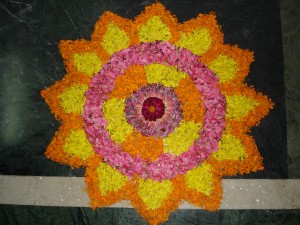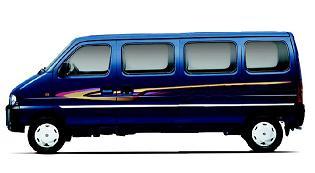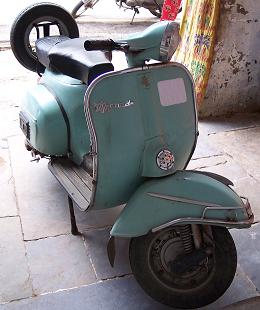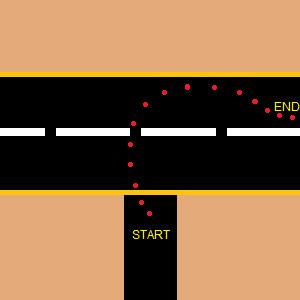It is very sad state of affairs that we all get to see and hear from Pakistan. They have been going through tough times ever since the terrorism struck Sri Lankan cricketers touring Pakistan earlier last year. Before that as well, various touring sides had multiple issues going to Pakistan – be it Taliban attacks, internal political uncertainties, Benazir Bhuto’s assassination and aftermath. The fact remains that the terrorism and political instability has spoiled cricket in this beautiful cricketing nation.
If you carefully analyze the problem faced by Pakistan cricket and Pakistan in general, the entire thing boils down to only two issues – The lack of democracy and education. Even the religious extremism, terrorism, poverty, unemployment – you name it – are byproducts of lack of good governance and focus on education.
For years together Pakistan has been under military rule or been governed by incompetent leaders who never had any vision for the country. The situation is continuing even now. If the country itself is run under uncertainties on a daily basis, what kind of economic growth and development can one expect?
So the need of the hour is:
– A stable government (not run by military leaders and incompetent politicians)
– Educational system revamping
– Focus on law and order within the country then worry about neighbors and the world
Unlike many Indians, I do not believe that terrorism is only bound to happen in a particular nation or a religion. It is really bad to finger point an entire nation due to some bad set of uneducated people. If you think that way, India is one of the terrorist nations as well because the internal problems such as Thelegana issue or Naxalism is as bad as terrorism. However, due to strong leadership and visionaries, there has been a lot of improvements and strong growth in India in the areas of health, eradication of poverty to some extend, education, homegrown technologies and agriculture. Pakistan needs to learn from such efforts and forget focus on religious issues etc.
It is important for strong neighbors like India and China to have greater political stability in Pakistan. That is the only way in which the entire region of South Asia can be a strong economic powerhouse. The current situation in Pakistan and Afghanistan will only lead to the USA deploying more forces in this region thereby threatening the next superpowers India and China. As long as each country manage the situation very well, we do not need any global police here and South Asia as a whole can grow big.
Coming back to cricket and the recent match/spot fixing allegations, I personally believe that it is the result of lack of education and ethics that needs to be built into each citizen by their leaders. Shahariyar Khan, the former PCB chief, made a very strong point recently. The captain of the team has to be an educated individual and has to instill certain culture and ethics to the youngsters who join their team very early in their lives. The Indian team has been lucky enough to be led by individuals with higher ethics and good education most of the time. Cricketers such as Saurav Ganguly, Anil Kumble, Rahul Dravid, Sachin Tendulkar and MS Dhoni have been excellent ambassadors of the game. On the other hand, the leadership in Pakistan cricket, PCB and the government itself has been shaky and everyone played only selfish roles all this while.
What Pakistan cricket probably needs as an immediate fix is a very strong individual – somebody like Imran Khan – at the PCB and they also need a strong captain. Part of the problem will be eliminated by this and the rest of course is with the government itself.
I sincerely hope that Pakistan cricket will come out all this mess soon. India and Sri Lanka could help Pakistan in that process by resuming their cricket tours to Pakistan.
Let the normality prevail at the earliest!


 Once the above three main requirements are taken care of, they do not really care about the safety standards, ride quality and the driving dynamics of the vehicle. There are number of tricks that the Indian auto manufacturers use in order to fool the Indian customer who see only the peripheral issues rather than the real mechanical aspects of the vehicle.
Once the above three main requirements are taken care of, they do not really care about the safety standards, ride quality and the driving dynamics of the vehicle. There are number of tricks that the Indian auto manufacturers use in order to fool the Indian customer who see only the peripheral issues rather than the real mechanical aspects of the vehicle. Going by the above experiences, what we can expect from Tata soon is the sedan version of Tata Nano which would be nothing but the Tata Indigo’s boot attached to the Nano. And how can Maruti be far behind? Just like Tata, elongated and marketed the Indigo XL, now the Maruti Eeco’s newer, longer variant – the Eeeeco as shown in the picture – can be on the roads anytime now. And people will still buy them!
Going by the above experiences, what we can expect from Tata soon is the sedan version of Tata Nano which would be nothing but the Tata Indigo’s boot attached to the Nano. And how can Maruti be far behind? Just like Tata, elongated and marketed the Indigo XL, now the Maruti Eeco’s newer, longer variant – the Eeeeco as shown in the picture – can be on the roads anytime now. And people will still buy them! The Bajaj scooter – ‘Hamara Bajaj’ as in Rahul Bajaj’s most successful campaign – has been there in the Indian market for almost 40 years with three models – the most successful Chetak, Super and 150. For the middle class Indian family consisting of a husband, wife and two to four kids, this vehicle was like their family member that carried the entire family and their accessories through the rough roads and under all kinds of weather conditions. Its toughness and low maintenance cost made it super successful in India though the surge of Japanese two-wheelers in the mid 80’s slowly forced it out of the game. It is really hard to forget some of those scenes that all of us have witnessed, admired and laughed at times.
The Bajaj scooter – ‘Hamara Bajaj’ as in Rahul Bajaj’s most successful campaign – has been there in the Indian market for almost 40 years with three models – the most successful Chetak, Super and 150. For the middle class Indian family consisting of a husband, wife and two to four kids, this vehicle was like their family member that carried the entire family and their accessories through the rough roads and under all kinds of weather conditions. Its toughness and low maintenance cost made it super successful in India though the surge of Japanese two-wheelers in the mid 80’s slowly forced it out of the game. It is really hard to forget some of those scenes that all of us have witnessed, admired and laughed at times. When typical Bajaj scooter rider, enters the main road from a side road, he usually takes wide 90 degrees turn – in fact 3/4th of a circle – before merging into the center of the road. This invariably causes some concerns among other drivers on the road, but they would expect this and manage the situation. See the illustration below to understand what I am talking about.
When typical Bajaj scooter rider, enters the main road from a side road, he usually takes wide 90 degrees turn – in fact 3/4th of a circle – before merging into the center of the road. This invariably causes some concerns among other drivers on the road, but they would expect this and manage the situation. See the illustration below to understand what I am talking about. Potato is something that is available in abundance in India and McDonald’s didn’t invent it for sure nor is its usage patented by them. We have been cooking potato based curries for 100s of years now and never used it as a main dish. One small portion of French fries cost around 45 rupees ($1) in McDonald’s. The retail price of potato is around 12-15 rupees per kilo and in wholesale sourcing may be at 5-6 rupees. One big potato is all that goes into one small order of fries and hence 1 rupee worth raw material (plus say 1 or 2 rupees worth of oil) is translated to Rs. 45/-. How’s that?
Potato is something that is available in abundance in India and McDonald’s didn’t invent it for sure nor is its usage patented by them. We have been cooking potato based curries for 100s of years now and never used it as a main dish. One small portion of French fries cost around 45 rupees ($1) in McDonald’s. The retail price of potato is around 12-15 rupees per kilo and in wholesale sourcing may be at 5-6 rupees. One big potato is all that goes into one small order of fries and hence 1 rupee worth raw material (plus say 1 or 2 rupees worth of oil) is translated to Rs. 45/-. How’s that?